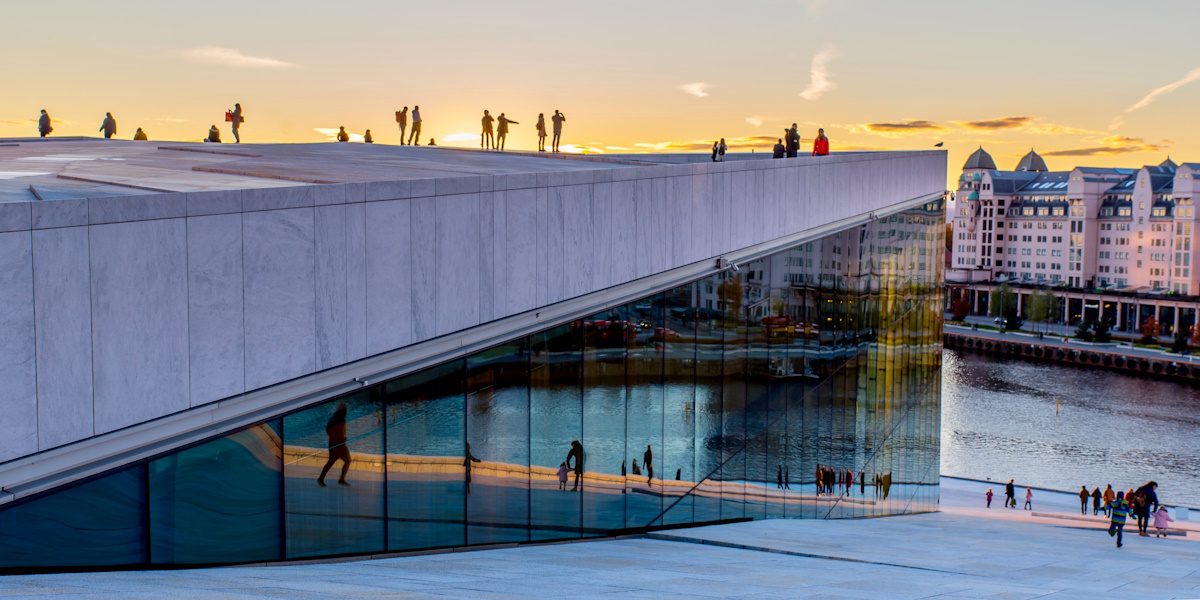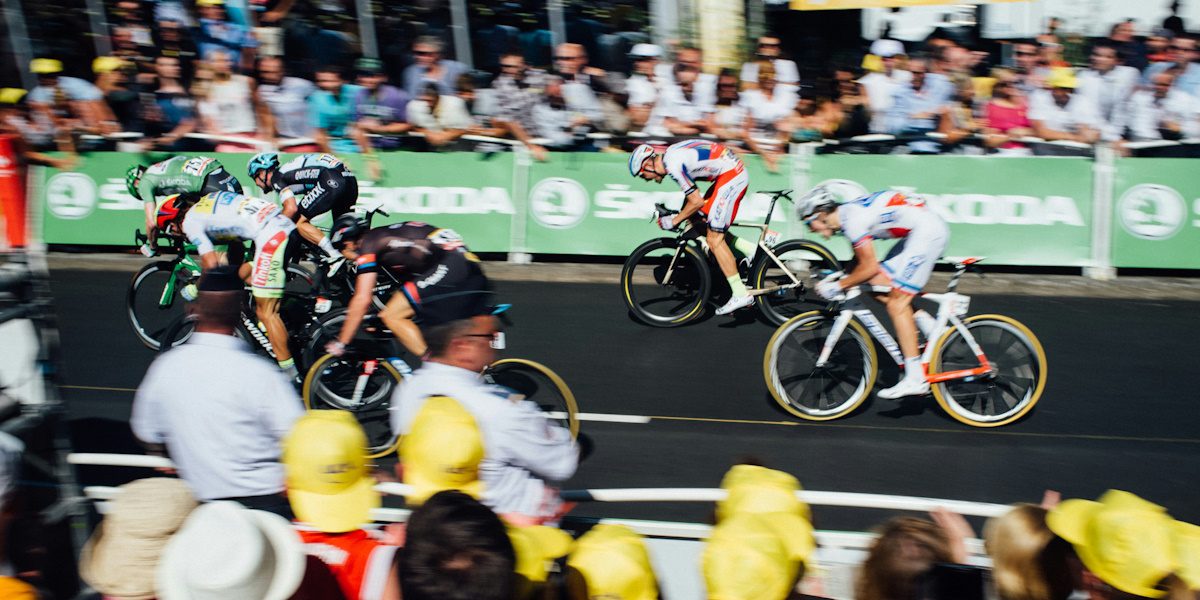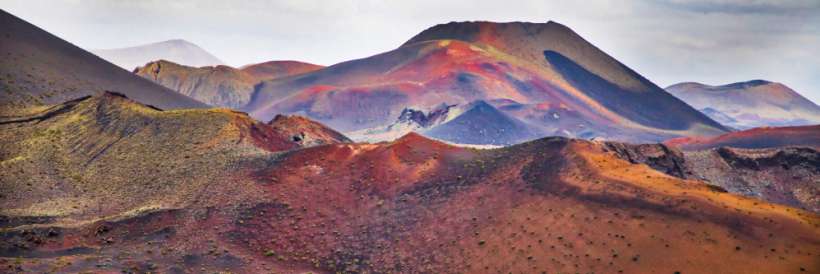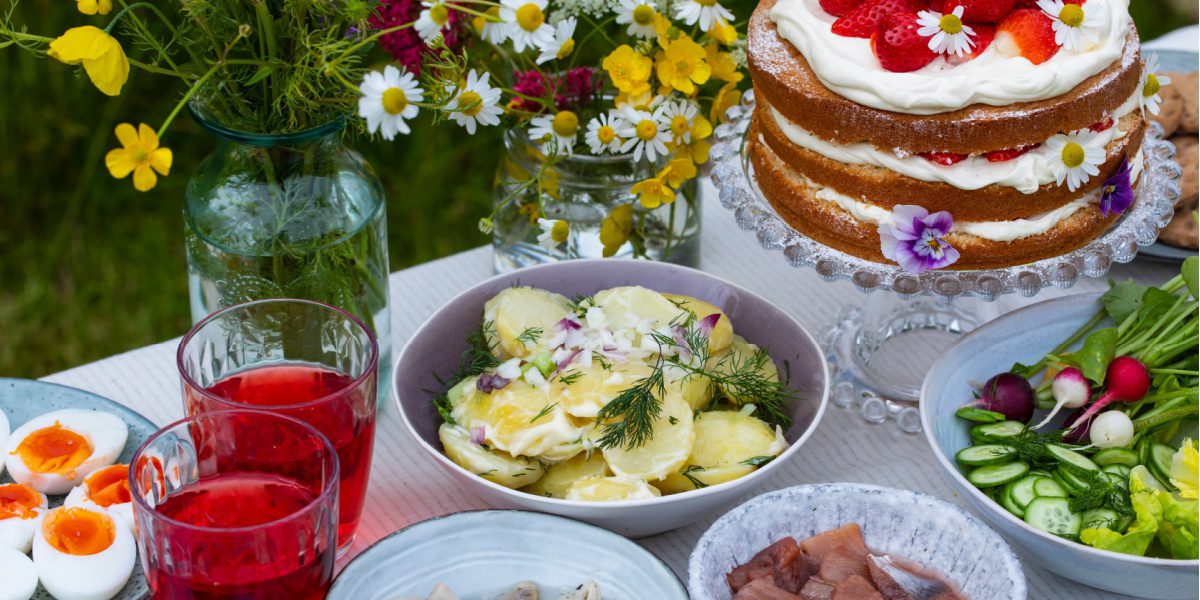Beyond its rich history, stunning natural beauty, and contemporary culture, the capital of Norway hides some inimitable characteristics. It’s known as ‘The Tiger City’, which is thought to originate from a poem by Bjørnstjerne Bjørnson, within which the tiger represents the danger of the city and the horse signifies the safety of the countryside. This symbol has been embraced as one of excitement and vitality in Oslo, and visitors are welcomed by a bronze statue of the animal when they leave the train station. This dynamism can be felt throughout the rest of the city too, in the bold street art that adorns its walls, and in the community atmosphere of the regular ‘crab parties’ that take place when there’s a particularly successful season. If we still haven’t convinced you to visit for a weekend, then perhaps these dazzling attractions and insider tips will be too tempting to resist…
Akershus Fortress
View this post on Instagram
Standing staunchly at the head of the Oslofjord, Akershus Castle has been a beacon in the capital since the 13th century. Built in 1299 by King Håkon V, this imposing fortress has witnessed the rise and fall of empires, the ebb and flow of wars and peace, and the evolution of the nation. Visitors can explore its labrynthine corridors and courtyards that still contain traces of bygone times, marvel at the panoramic views of the kingdom from the towers, or even attend one of its many cultural events and festivals.
dealchecker Tip: If you’re planning on packing in a few of Oslo’s most popular attractions during your time there, then it’s probably worth investing in an Oslo Pass. It starts from £36 for 24 hours, however this includes all travel and sights including Akershus Castle, the Fram Museum and the outdoor swimming pool complex Frognerbadet.
Munch Museum
View this post on Instagram
Opened in 2021, the Munch Museum is thought to be one of the world’s largest museums to revolve around one artist, and its towering—and controversial—structure is home to 13 floors, 11 galleries and over 200 Munch works on permanent display. The main draw is, of course, The Scream, and on the fourth floor, visitors will find a rotating display of three versions of the work—a painting, a drawing and a print. The gallery also regularly houses works by other major artists that can be considered alongside Munch’s oeuvre. For example, at the time of writing, there is currently an exhibition that explores the modernist connections between Munch and Goya.
dealchecker Tip: You can enter the museum for free on Wednesdays from 6-9pm!
The National Museum
View this post on Instagram
With 13,000 square metres of exhibition space, Norway’s National Museum is bigger than Amsterdam’s Rijksmuseum and Bilbao’s Guggenheim. To be fair though, there is a lot of culture and history to pack in, and pack it in it does. You’ll find a whole room dedicated to arguably Norway’s most famous export Edvard Munch and another immersice space that transports visitors to the the country’s fairytale lands. The world of design is celebrated too, with examples of seminal Scandi interiors and the works of revolutionary fashion designers including Per Spook and Peter Dundas.
dealchecker Tip: The museum’s dedicated visitor guide app is free to download and includes audio tours, maps, and loads of other handy extras! Plus, if you need to unwind after all that cultural stimulation, then you’ll find one of Oslo’s famous floating sauna’s right outside…
Vigeland Park
View this post on Instagram
Gustav Vigeland was another of Norway’s artistic icons, and his remarkable sculptures can be seen up close in Vigeland Park. His striking, melancholic sculptures mostly depict the human condition and the various stages and strifes of life. Here, visitors will find 200 granite, bronze and wrought iron sculptures, including three of his most famous works—the Bridge, the Fountain and the Monolith. The park is free to visit and wander around, and makes for a lovely place to walk, talk and relax. There is also a museum in the ground, which contains even more works and information about the sculptor.
dealchecker Tip: If you find yourself in need of a pick-me-up, Anne På Landet can be found to the left of the park before the Bridge. Here, you’ll find coffee, snacks, lake views and a warm welcome.
Holemkollen Ski Museum & Tower
View this post on Instagram
This year marks a century since the Holmenkollen Ski Museum opened, making it the oldest ski museum in the world, and definitely due a revamp! The new improved version will reopen in December after a refurbishment. Inside, visitors can peruse skis used by athletes and the royal family, and this year, the oldest ski found in Norway will be on display, which is thought to be over 5000 years old. Visitors can also climb to the top of the famous ski jump tower, which offers incredible vistas across Oslo, and then zipline down it if they dare!
dealchecker Tip: The ski jump still hosts professional events, so you might even be able to see it in action during your trip!
Oslo Opera House
View this post on Instagram
The Oslo Opera House is worth visiting even if you haven’t booked to see a show. This architectural masterpiece was designed to resemble an iceberg rising from the waters of the Oslofjord and visitors can actually walk upon its slanted roof—yet another incredible viewpoint in the capital.
dealchecker Tip: If you’re interested in finding out more about this building, then there’s a free walking tour available to book, which includes a visit to the Oslo Opera House, as well as a number of other interesting locations. The Vippa food hall is also nearby is you’re in need of a reasonably-priced bite!
The Norwegian Museum of Cultural History
View this post on Instagram
The Norwegian Museum of Cultural History is an interactive, mostly open-air museum that provides a glimpse into Norway’s past with over 150 historical buildings from various regions, including a stave church that looks like something from a fairytale and an apartment buildings that features examples of different eras, styles and occupants.
dealchecker Tip: The museum is located on the Bygdøy peninsula, so you could even spend some time here exploring the peaceful beaches. You can also easily hop between the peninsula and city centre via ferry, which will offer another perspective of the capital.
The Royal Palace
The Royal Palace, the official residence of the Norwegian monarch, is a grand architectural marvel. There are tours available in the summer, while the changing of the guard ceremony happens each day at 1pm. The beautiful surrounding park, Slottsparken, is a tranquil space dotted with statues and lakes, making for a particularly special picnic.
dealchecker Tip: The palace is only open for tours from late June to mid August each year, so if you’re heart is set on seeing inside, then make you book a trip within this time frame.





